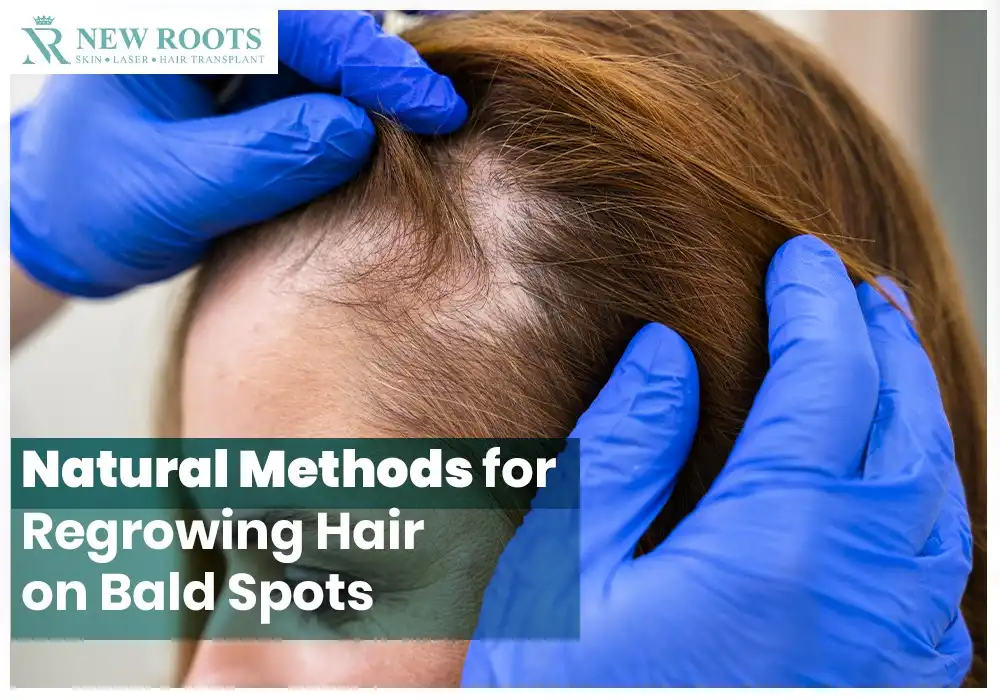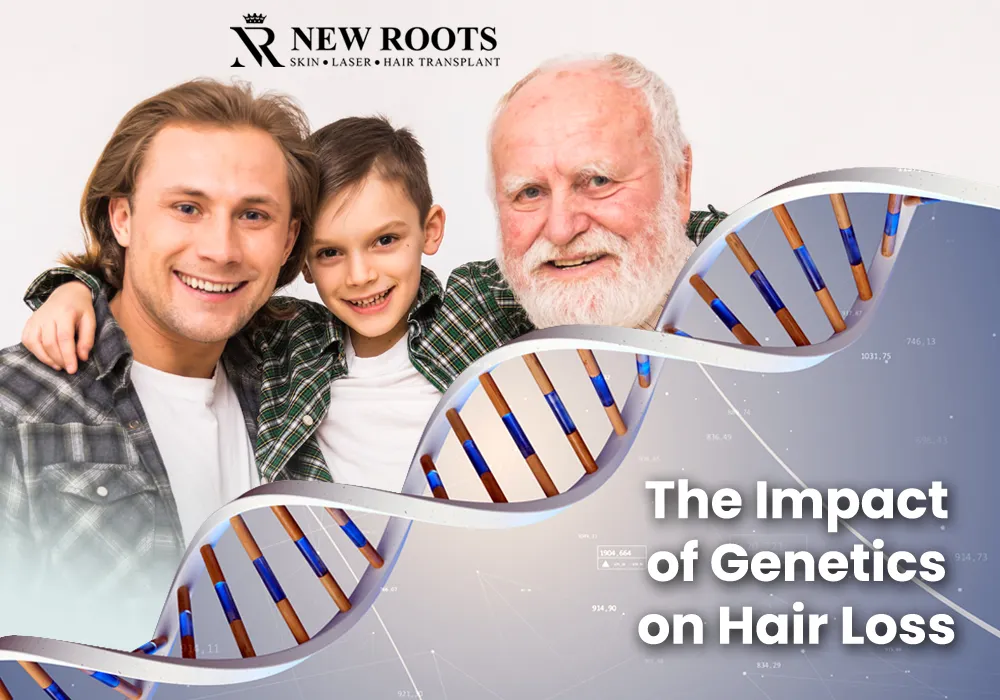Natural Methods for Regrowing Hair on Bald Spots
Hair loss, especially balding, is a shocker, affecting an individual’s physical and psychological well-being. Many ask the big question: Can one grow hair back in a bald area without a hair transplant?
In this entirely detailed course, you will discover other natural approaches and cures that may also assist you in developing hair on a bald head. This article will answer the following questions: Is it possible to regrow hair on a bald spot naturally? How can hair be grown on a bald head?
Table of Contents
Introduction: Is it possible to regrow hair on a bald spot naturally
Baldness is one of the most investigated problems impacting millions of individuals of different ages. While some people start to lose their hair and have thin hair, others begin to have some quite conspicuous patches, creating frustration and insecurity.
Negro hair re-growth has always been a cumbersome issue for centuries, and several traditional and modern approaches have come into existence.
Understanding Hair Loss
Thus, hair loss can be attributed to several conditions, such as hereditary factors, hormonal changes, stress, and malnutrition. However, it is significant to identify why you are losing your hair before jumping right into the natural remedies.
That knowledge will help adjust the procedures and make the natural remedies as effective as possible.
Overview of Hair Loss and Areas of Hair Loss
Knowing what causes hair loss is imperative when considering the chances of restoring hair to a bald area through natural remedies.
Several factors can contribute to hair thinning and baldness.
Androgenetic Alopecia (Male Pattern Baldness and Female Pattern Hair Loss):
This is a mild form of hair loss that results in scraping the hairline and thinning the hair at the crown. This condition is partly hereditary and also has a strong link with androgen levels in the body.
Telogen Effluvium:
This results in hair loss due to stress, hormonal fluctuation, or other health complications a person may be experiencing. It's not permanent most of the time; hair starts to re-grow in a few months.
Alopecia Areata:
This autoimmune disorder causes baldness in the scalp, eyebrows, or other body parts.
Traction Alopecia:
This type of hair loss results from pulling the hair too tight, such as when you wear a plait, extensions, or ponytails.
Scarring Alopecia is characterized by hair loss because hair is destroyed at the root due to a scar formed by bacterial infection, burns, or any other cause.
Understanding Hair Loss factors
1. Genetics:
Hereditary Hair Loss (Androgenetic Alopecia):
This is the most dominant form of hair loss prevailing in both the male and the female category of individuals. It stems from heredity and sex hormones produced in the human body.
Male Pattern Baldness (androgenetic alopecia):
It leads to the hairline moving back and less hair at the top of the head.
Female Pattern Baldness (Androgenetic Alopecia):
This pattern manifests as general alopecia, and someone’s crown area and parting are thinner.
2. Hormonal Changes:
Pregnancy:
Usually, pregnancy and the period after childbirth are dangerous for hair loss because of hormonal changes.
Menopause:
Menopausal women have low estrogen levels, which may cause hair thinning.
Thyroid Disorders:
Hypothyroidism or hyperthyroidism, that is, low or high thyroid gland activity, can influence hair growth.
Polycystic Ovarian Syndrome (PCOS):
Hyperthyroidism is another hormonal problem that can lead to hair loss on the head but at the same time enhances the growth of hair in the other parts of the body.
3. Stress:
Telogen Effluvium:
This condition is initiated by stress and makes hair follicles rest and shed off.
Alopecia Areata:
the immune system attacking the hair follicles causes hair loss in areas of the scalp.
4. Medical Conditions:
Iron Deficiency Anemia:
Iron deficiency also influences hair growth, so it should be taken in the proper proportions.
Nutritional Deficiencies:
Lack of some vitamins such as biotin, zinc, and vitamin D are some of the factors that may impact hair.
Scalp Infections:
Certain parasitic infections can also cause hair loss, as the fungi or bacteria attack the follicles.
5. Medications:
Some drugs usually administered for a specific condition come with the side effect of hair loss.
6. Lifestyle Factors:
Poor Diet:
It can result from either a deficiency of nutrients or as one of the symptoms of other illnesses.
Smoking:
Smoking reduces blood flow in the head, including the scalp, which impacts hair regrowth.
Excessive Alcohol Consumption:
Alcohol hampers the absorption of vital nutrients into the body and also affects hair growth and development negatively.
7. Environmental Factors:
Pollution:
There are reports that certain air pollutants can harm the hair follicle in some ways.
Harsh Chemicals:
These generally affect hair, especially when one insists on using products that affect hair; some commonly used hairstyles or treatments also harm hair.
8. Trauma:
Injury to the scalp, including mechanical stimulus, may affect the hair follicles and lead to hair loss.
Seeking Professional Guidance:
Anyone who experiences a drastic loss of hair should always seek the services of a dermatologist or trichologist to get to the root of the problem. They can arrive at a diagnosis and advise on possible treatments.
Is it possible to regrow hair on a bald spot naturally?
The Role of Genetics and Hormones:
Hair loss usually results from genetics and hormonal issues, but they do not always rule the roost. Genetics dictate the likelihood of hair loss; however, the swiftness and severity of hair loss are generally dictated by your way of life and who you are.
The Potential of Natural Remedies:
Various natural products are highly beneficial for hair regrowth and treating primary factors that trigger hair loss. These remedies may not affect everyone, but they complement standard treatment perfectly.
They function by enhancing the scalp’s health, raising blood circulation within the head, and providing nutrients to the human hair.
Dietary Changes for Hair Growth: Proven Ways to Regrow Hair Naturally
Dietary Changes:
A balanced diet is crucial for hair health, as foods have the potential to build or destroy healthy hair.
Particularly beneficial nutrients include:
Protein: Protein is the principal constituent of hair; therefore, sufficient and balanced amounts are required in the diet.
Iron: Iron can cause hair loss, and the opposite is true; lacking it can result in hair problems.
Omega-3:
Some of the measures that the user needs to ensure to maintain healthy scalps include:
Vitamins:
Vitamins A, C, D, and E are indeed essential for hair growth.
How to Implement:
Lifestyle changes that can help include consuming foods such as fish, eggs, nuts, seeds, and vegetables, especially leafy greens. Consider supplements if necessary.
Herbal Treatment of Hair Loss: Is it possible to regrow hair on a bald spot naturally
Natural treatments as a strategy should be taken as low risk since it is always easier to regrow hair. Here are some well-known methods: Here are some well-known methods:
Essential Oils
Many cultures worldwide use essential oils to enhance hair regrowth. They are packed with nutrients that feed the scalp and encourage hair follicles to grow constantly.
Rosemary Oil:
Rosemary oil was also discovered to have the potential to enhance the generation of particular cells.
Peppermint Oil:
Helps to boost blood flow circulation to the head, especially the scalp.
Lavender Oil:
Has been found to have antibacterial properties and is also suitable for hair regrowth.
Cedarwood Oil:
Corrects the oil production in the scalp since it contains glands that produce oil.
How to Use:
Add 2-3 drops of your preferred essential oil to a tablespoon of carrier oil, such as coconut or jojoba oil, then apply to the scalp. It is advised to keep it on the hair for at least half an hour before rinsing off with water.
Herbal Treatments how to grow hair on a bald head
Certain herbs are renowned for their hair regrowth properties: Certain herbs are renowned for their hair-regrowth properties:
Saw Palmetto:
Reduces inhibin B hormone, an antagonist to DHT that promotes hair loss.
Aloe Vera:
Cares for the skin of the head and treats hair.
Ginseng:
I also found that it contributes to the shift of the hair cycle to promote growth.
How to Use:
It can also be incorporated into your shampoo or applied locally to the affected area.
Conclusion
It is difficult to naturally grow hair back on a bald area, and even when one does, you are likely to see the results temporarily.
Regenerated hair is commonly proven to be poor in quality, inherently fragile, short-lived, and thin, owing to general causative factors like genetic predisposition, hormonal imbalance, and stress.
These natural methods require time and perseverance, and their results are often not permanent; thus, they are less effective.
Therefore, hair transplantation is considered a superior solution due to the possible limitations of the described methods.
In contrast to some natural cures, hair transplantation enables the relocation of healthy grafts to areas without hair growth, thus providing lasting results.
This procedure is a permanent solution technique that is preferred to temporary and doubtful natural remedies.
At New Roots Hair Transplant Clinic, we offer expert hair transplant services that provide effective and long-lasting solutions for hair loss and low self-esteem.






